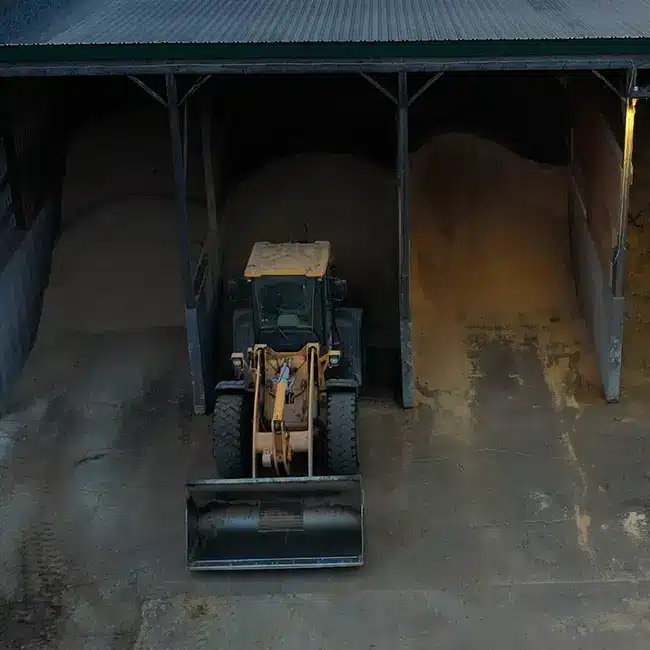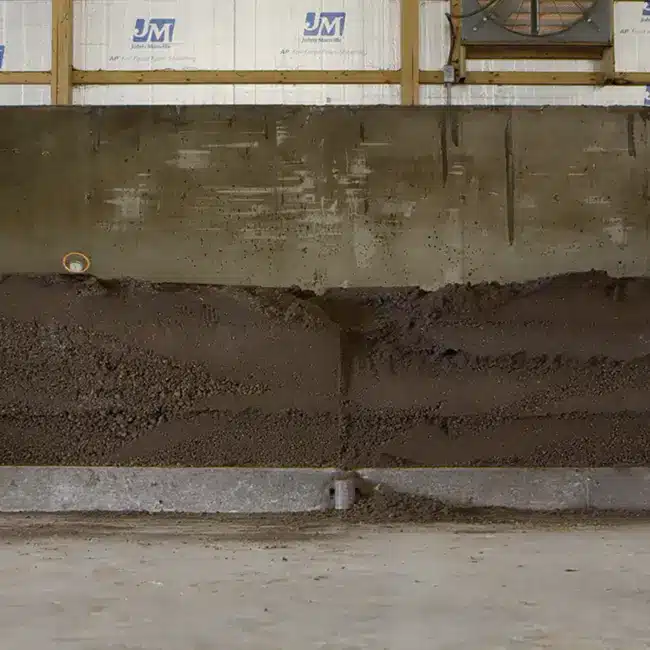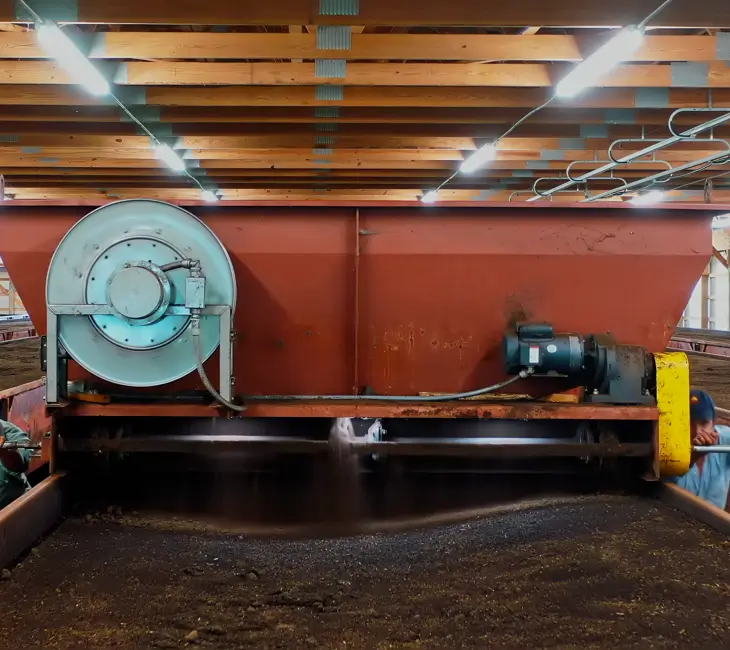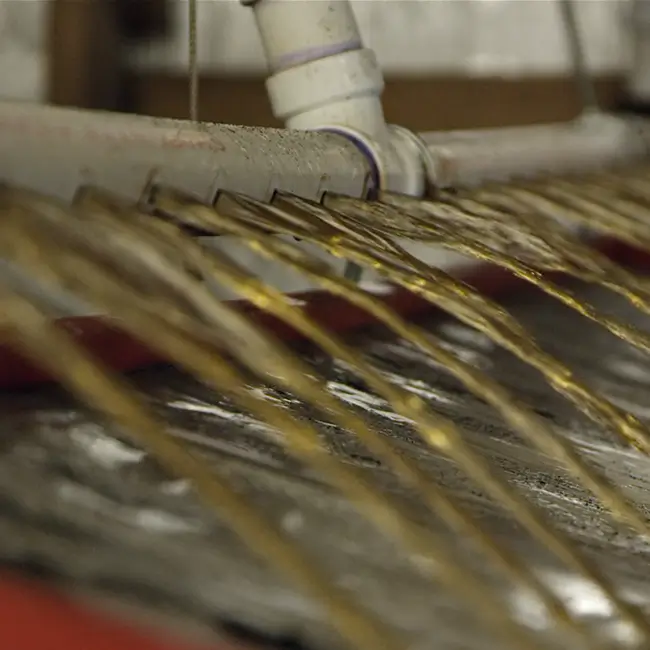With over 80,000 square feet of covered and indoor space, Worm Power is one of the largest controlled environment vermicomposting facilities in the world!

With over 80,000 square feet of covered and indoor space, Worm Power is one of the largest controlled environment vermicomposting facilities in the world!
We employ a four stage process, leveraging the natural pathways of organic matter conversion.
Worm Power products begin at our partner dairy farm. Coyne Farm is a New York State Dairy of Distinction that closely monitors the feed and health of all their cattle. Selected manure is collected and pushed through a separator where it is separated into liquids and solids. Worm Power mixes the solids with silage from corn, hay, and alfafa grown on the dairy farm. Worm Power precisely measures the inputs to get the exact Carbon to Nitrogen ratio needed to produce uniform and consistent worm castings.

The compost material is moved into our composting building and placed into a compost bay for 30 days. Each bay is aerated so that air can be blown into the compost to assist in aerobic digestion. The temperature is naturally maintained above 130 degrees Fahrenheit to achieve full thermophilic composing and to kill off any pathogens. To make sure our compost is safe for our worms, we move the compost to another compost bay and do the whole process again for another 30 days.

We move the compost and convey it into the vermicompost building where it gets loaded into the feeding bins. The feeding bins apply the new food to the top of the worm digester beds. The worm digester beds are 160 feet long and hold between 18 inches and 24 inches of material.
Each bed contains approximately 2,000,000 worms! Our worms are red wigglers that primarily live and eat in the top half of the digester bed. The worms eat the compost and push out their castings. We closely monitor the moisture and temperature of the beds to ensure that the worms are eating and working as efficiently as possible. Once a week we add about 1.5 inches of new feed material for the worms on the top of the bed and we scrape off about 1.5 inches of pure solid worm castings. It takes at least 12 weeks from the time the compost is added to the worm digester beds to the time the vermicompost is harvested at the bottom.

The vermicompost that is harvested out of the beds is paddled and conveyed over to our finishing screening building. Here, we screen the solids through ¼ inch screens to remove any large chunks. We only use the fine screened material for our vermicompost extract process.
We filter our water through carbon filters to remove contaminants and particulates for use in the extraction process. The solid vermicompost is loaded into filter bags and then carefully inserted into the extract tanks. We carefully monitor the time duration and temperature within the extract tanks to ensure a consistent amount of water-soluble nutrients and microbiology are extracted into the liquid. When the extract is complete and has met our quality control standards, we filter it through three 200 mesh (70 micron) screens and package for distribution to our customers.
